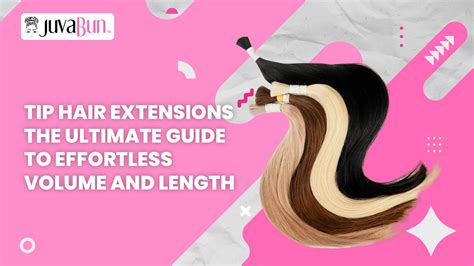Introduction
Tape-in extensions are a semi-permanent hair extension method that allows you to add length, volume, and texture to your natural hair without the use of heat or damage. They are made of 100% human hair and are applied using a special tape adhesive that bonds to your natural hair. This method is popular among those who want a low-maintenance and affordable way to achieve their desired hair goals.

Benefits of Tape-In Extensions
- Length and Volume: Tape-in extensions can add significant length and volume to thin or short hair, instantly transforming your look.
- Damage-Free: Unlike other hair extension methods, tape-in extensions do not require heat or glue, which can damage your natural hair.
- Removable: Tape-in extensions are easily removable, allowing you to change your hairstyle or remove them for special occasions.
- Low-Maintenance: Once applied, tape-in extensions require minimal maintenance and can last up to 6-8 weeks with proper care.
- Affordable: Compared to other semi-permanent hair extension methods, tape-in extensions are relatively affordable, making them a great option for those on a budget.
How Tape-In Extensions Are Applied
- Section Hair: Hair is divided into small sections, usually about 1 inch wide and 3-4 inches long.
- Apply Tape: A thin strip of double-sided tape is applied to the top of each natural hair section.
- Sandwich Hair: The extension is placed on top of the taped section, and another strip of tape is applied to the bottom of the natural hair.
- Press and Heat: The two taped sections are pressed together using a heating tool to create a strong bond.
Pain Points and Motivations for Tape-In Extensions
Pain Points:
- Damage to Natural Hair: Improper application or removal of tape-in extensions can cause damage to your natural hair.
- Tape Visibility: If not applied correctly, the tape may become visible, which can affect the overall aesthetic.
- Lifespan: The lifespan of tape-in extensions can be shortened by factors such as improper maintenance and exposure to heat.
Motivations:
- Length and Volume: The desire to add length and volume to thin or short hair.
- Styling Versatility: Tape-in extensions allow for a wide range of hairstyles, including updos, braids, and curls.
- Convenience: The ease of application and removal makes tape-in extensions a convenient option for those with busy schedules.
- Cost-Effectiveness: The affordability of tape-in extensions compared to other semi-permanent hair extension methods.
Effective Strategies for Successful Tape-In Extensions
| Pain Point | Strategy |
|---|---|
| Damage to Natural Hair | Proper application and removal techniques, use of high-quality tape adhesive. |
| Tape Visibility | Application by an experienced stylist, use of thin, flexible tape. |
| Lifespan | Regular maintenance, avoid exposure to heat, use sulfate-free shampoo and conditioner. |
Common Mistakes to Avoid
- Over-Applying Tape: Using too much tape can lead to visibility and weigh down the hair.
- Applying Extensions Too Close to the Roots: This can cause discomfort and tension on the scalp.
- Using Low-Quality Tape Adhesive: This can result in premature loosening of the extensions.
- Ignoring Maintenance: Proper maintenance is crucial for extending the lifespan of the extensions.
- Improper Removal: Removing the extensions without using proper techniques can damage your natural hair.
Creative Applications for Tape-In Extensions
- Color Correction: Tape-in extensions can be used to add highlights, lowlights, or ombré effects to natural hair.
- Texture Enhancement: Curly or wavy extensions can be added to add texture and volume to straight hair.
- Hair Extensions for Special Occasions: Tape-in extensions can be applied temporarily for special events, such as weddings or prom.
- Length Enhancement for Short Hair: Tape-in extensions can be used to create the illusion of longer hair without having to wait for it to grow naturally.
- Protective Styling: Tape-in extensions can be worn under wigs or weaves to protect natural hair from damage.
Table 1: Comparison of Hair Extension Methods
| Method | Pros | Cons |
|---|---|---|
| Tape-In | Damage-free, removable, low-maintenance | Potential for damage if applied incorrectly |
| Clip-In | Easy to apply and remove, non-damaging | May be visible, limited styling options |
| Fusion | Long-lasting, creates volume | Heat damage, can be difficult to remove |
| Micro-Link | Very discreet, natural-looking | Time-consuming to apply, may require regular maintenance |
| Glue-In | Affordable, long-lasting | Heat damage, difficult to remove |
Table 2: Lifespans of Different Hair Extension Methods
| Method | Lifespan |
|---|---|
| Tape-In | 6-8 weeks |
| Clip-In | 1-2 years |
| Fusion | 3-6 months |
| Micro-Link | 2-3 months |
| Glue-In | 3-6 months |
Table 3: Cost Comparison of Hair Extension Methods
| Method | Average Cost |
|---|---|
| Tape-In | $200-$600 |
| Clip-In | $150-$300 |
| Fusion | $800-$2000 |
| Micro-Link | $300-$800 |
| Glue-In | $400-$1000 |
Table 4: Maintenance Tips for Tape-In Extensions
- Wash hair 2-3 times per week using sulfate-free shampoo and conditioner.
- Avoid exposing the extensions to heat styling tools.
- Use a wide-tooth comb or brush to avoid tangles.
- Get regular maintenance check-ups to tighten the tape and adjust the extensions as needed.
Conclusion
Tape-in extensions are a versatile and cost-effective hair extension method that offers numerous benefits, including length and volume enhancement, damage-free application, and easy removal. By following the proper application, maintenance, and removal techniques, you can achieve beautiful and long-lasting results with tape-in extensions. Whether you’re seeking a temporary solution for a special occasion or a semi-permanent way to transform your hair, tape-in extensions offer a wide range of possibilities to suit your needs and aspirations.
